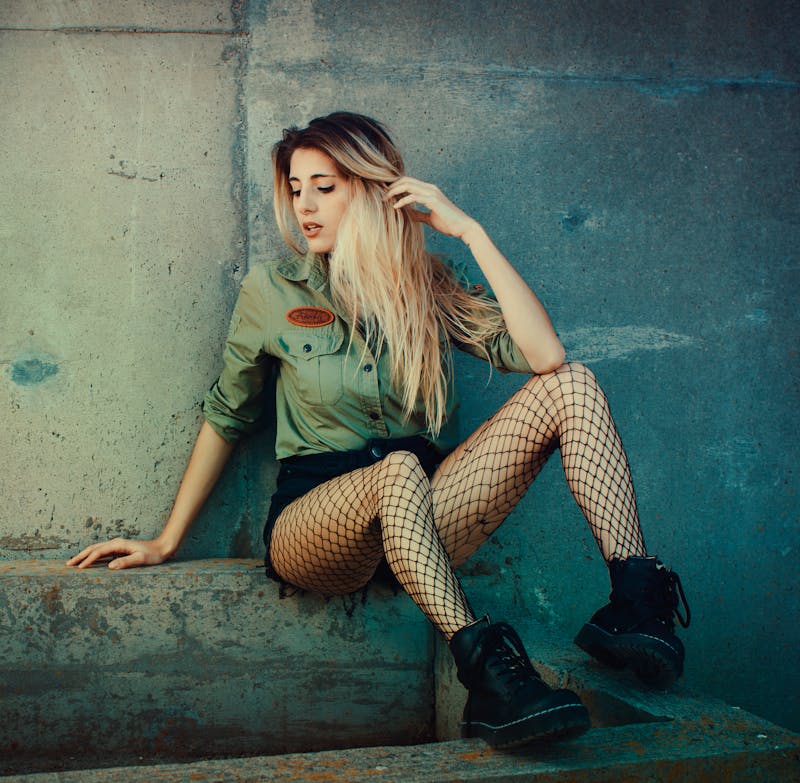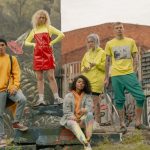The Power of Color in Fashion
Why Colors Matter in Fashion Trends
Color isn’t just about aesthetics; it’s a powerful communicator. Fashion has always been about expressing identity, mood, and personality. As the seasons change, so too does the palette of colors that dominate runways and eventually make their way to the streets. Color trends are a key component of fashion forecasting, shaping everything from garments to accessories.
The Influence of Color on Consumer Behavior
Studies have shown that colors can significantly influence purchasing decisions. A striking color can evoke feelings of excitement, elegance, or calm, prompting consumers to lean towards certain clothing items. With each new season, color forecasts guide consumers and designers alike in choosing what will resonate most with the market.
How Color Trends Are Determined
Fashion Weeks and Their Role in Color Prediction
Fashion weeks in New York, Paris, Milan, and London act as the bellwethers of color trends. Designers showcase their collections, often featuring a carefully curated color palette that hints at what’s to come. These colors are carefully chosen not just for their beauty but also for their cultural relevance. Trends observed on the runway serve as a guide to what will be seen in stores and on the streets.
The Role of Pantone and Color Institutes
Pantone, the world-renowned color institute, plays a pivotal role in determining color trends. Each year, Pantone selects a “Color of the Year,” a hue that resonates with current global events and societal moods. Their expertise is frequently used by designers and brands to influence color choices in their collections, providing a cohesive vision for the upcoming season.
The Color Forecast for Next Season: Bold Predictions
Vibrant Hues: The Return of Bold Colors
This upcoming season, expect to see a resurgence of vibrant, bold colors. Bright and energetic shades like electric blue, fuchsia, and vivid yellow are making a strong comeback. These colors are perfect for those looking to make a statement or add a pop of excitement to their wardrobes. Bold colors often indicate confidence, making them ideal for those who want their outfits to stand out.
Earthy Tones: Natural Shades Making a Comeback
In contrast to the vibrancy, earthy tones like terracotta, olive green, and rich browns are also expected to dominate. These hues reflect nature and sustainability—two significant movements in fashion today. Earthy colors have a grounding effect, providing a sense of calm and warmth. These colors will be perfect for anyone looking to embrace a more relaxed, yet stylish, aesthetic.
Pastels: Soft, Calm, and Fresh
Pastels will continue to shine next season, bringing a soft, airy vibe to collections. Think lavender, pale peach, mint green, and baby blue. These gentle hues are ideal for creating fresh, youthful looks that exude serenity. Pastels can also be layered, making them versatile for various occasions, from casual daywear to more formal events.
Neutrals: Timeless Elegance in Fashion
Neutrals like beige, taupe, and soft gray are classic choices that never truly go out of style. These colors are favored for their ability to pair seamlessly with almost any other hue. Next season, neutrals will continue to be the foundation for many collections, offering timeless elegance and versatility. Whether you’re building a capsule wardrobe or simply love minimalist style, neutrals are essential.
The Psychology of Color in Fashion
How Colors Affect Mood and Perception
Color doesn’t just influence style—it also has a psychological impact. Warm colors like red and orange can make us feel energized and passionate, while cooler tones like blue and green can evoke calm and tranquility. Choosing the right colors for an outfit can help set the tone for how you want to feel, and how you want to be perceived.
The Emotional Connection to Certain Hues
Certain colors have long-standing associations. For example, red is often linked to power and confidence, while blue is considered trustworthy and professional. These emotional connections can make the choice of color in fashion even more deliberate. When choosing your wardrobe, consider not just how a color looks, but also how it makes you feel and what message it sends to the outside world.
What These Color Trends Mean for the Consumer
How to Incorporate These Colors Into Your Wardrobe
For consumers, the key to embracing these color trends lies in balance. While it’s tempting to dive headfirst into vibrant hues or earthy tones, it’s important to incorporate them thoughtfully. A bold-colored jacket can make a statement, while pastel accessories can add a subtle, refreshing touch. By combining trendy colors with your existing wardrobe, you can create a look that feels fresh without completely overhauling your closet.
Practical Tips for Styling Bold Colors
If you’re hesitant to dive into bold colors, start small. A statement accessory like a bright handbag or a pair of shoes in an eye-catching color can be a simple way to add flair to your outfit. If you’re feeling adventurous, combine multiple vibrant colors to create a fashion-forward, striking look. The key is confidence—wear your bold colors with pride.
Color Pairing: How to Mix and Match Trendy Hues
Contrasting vs. Complementary Colors
When styling bold or vibrant colors, understanding the concept of contrasting and complementary colors can help you create visually striking outfits. Contrasting colors, like orange and blue, stand out next to each other, while complementary colors, such as green and red, create harmony. Experiment with both to find a combination that suits your personal style.
The Art of Monochromatic Outfits
Monochromatic dressing—wearing one color in varying shades—has always been a timeless look. By choosing one color and layering it in different tones, you create a cohesive and elegant outfit. For next season, this approach will be especially popular, allowing fashion enthusiasts to explore the depth of a single hue while maintaining a sophisticated, polished look.
Conclusion: The Future of Fashion Colors
As the next season unfolds, colors will continue to play an integral role in defining fashion trends. Whether you’re drawn to vibrant hues, earthy tones, or timeless neutrals, there’s a color palette for everyone. Embrace the colors that resonate with your personal style, and don’t be afraid to experiment with new combinations.
Fashion is about expression, and color is one of the most powerful ways to communicate who you are. With the right understanding of how to use color, you can stay ahead of the trends and make a lasting impact wherever you go.

FAQs
1. How do I know what color suits me best?
Try experimenting with different colors and see how they make you feel. You can also consider your skin tone—warmer undertones tend to look great in earthy shades, while cooler undertones might shine in blues and pastels.
2. Can I wear multiple bold colors at once?
Yes! Mixing bold colors can create a fun, eye-catching look, but remember to balance them well. Pairing complementary hues, like yellow and purple, or contrasting colors, like red and green, can work wonders.
3. What are some easy ways to incorporate next season’s colors into my wardrobe?
Start with accessories! Scarves, bags, and shoes in trendy colors are simple ways to add a fresh touch to your wardrobe without committing to full outfits in bold hues.
4. Are earthy tones still in style?
Absolutely! Earthy tones are making a strong comeback, with their warm, natural vibe perfectly aligning with sustainability trends in fashion.
5. What color should I wear if I want to look professional?
For a professional look, opt for neutral shades like navy, gray, and beige. These colors exude sophistication and are always in style.

